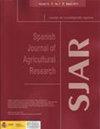Effect of feeding restrictions on development of juvenile cobias, Rachycentron canadum
IF 0.8
4区 农林科学
Q3 AGRICULTURE, MULTIDISCIPLINARY
引用次数: 0
Abstract
Aim of study: A 45-day trial was conducted to evaluate fasting as a possible way of food strategy during production of juvenile cobias (Rachycentron canadum). Area of study: The study was conducted in the State of Espírito Santo, Brazil. Material and methods: The following different protocols were used to organize their feeding: C, fish fed to satiety twice a day for 45 days; U1, fish fed to satiety twice a day on alternate days; U2, fish fed to satiety twice daily for five consecutive days, followed by two days of food deprivation, cyclically; U5, fish subjected to food deprivation for five days and then fed to satiety twice a day for 40 days; U10, fish subjected to food deprivation for ten days and then fed to satiety twice a day for 35 days; and U15, fish subjected to food deprivation for fifteen days and then fed to satiety twice a day for 30 days. Main results: No mortality was observed during the trial period. The different feeding protocols significantly affected juvenile cobias development and wellbeing. The final weight (g) of cobia juveniles was C – 91.9 ± 9.1; U1 – 75.0 ± 11.2; U2 – 72.2 ± 6.0; U5 – 70.3 ± 6.1; U10 – 63.4 ± 4.6; U15 – 54.4 ± 4.7. No compensatory growth was observed during the entire experimental period. Research highlights: Continuous fasting had a more severe effect than intermittent fasting. Significantly greater hepatocyte counts were correlated with longer fasting periods. Fasting protocols should not be recommended for juvenile cobias.摄食限制对大菱鲆幼鱼发育的影响
研究目的:进行了一项为期45天的试验,以评估禁食作为幼年玉米螟(Rachycentron canadum)生产过程中的一种可能的食物策略。研究领域:该研究在巴西圣埃斯皮里托州进行。材料和方法:采用以下不同的方案来组织它们的喂养:C,每天两次饱腹喂养,持续45天;U1,隔日每天两次喂饱鱼;U2,鱼连续五天每天两次饱腹,然后两天禁食,周期性;U5,鱼被剥夺食物五天,然后每天两次饱腹,持续40天;U10,鱼被剥夺食物10天,然后每天喂饱两次,持续35天;和U15,鱼被剥夺食物15天,然后每天喂饱两次,持续30天。主要结果:试验期间未观察到死亡。不同的喂养方案显著影响幼蛛的发育和健康。玉米螟幼虫的最终体重(g)为C–91.9±9.1;U1–75.0±11.2;U2–72.2±6.0;U5–70.3±6.1;U10–63.4±4.6;U15–54.4±4.7。在整个实验期间没有观察到补偿性生长。研究重点:持续禁食的影响比间歇性禁食更严重。肝细胞计数显著增加与禁食时间延长相关。不建议对幼年cobias采用禁食方案。
本文章由计算机程序翻译,如有差异,请以英文原文为准。
求助全文
约1分钟内获得全文
求助全文
来源期刊

Spanish Journal of Agricultural Research
农林科学-农业综合
CiteScore
2.00
自引率
0.00%
发文量
60
审稿时长
6 months
期刊介绍:
The Spanish Journal of Agricultural Research (SJAR) is a quarterly international journal that accepts research articles, reviews and short communications of content related to agriculture. Research articles and short communications must report original work not previously published in any language and not under consideration for publication elsewhere.
The main aim of SJAR is to publish papers that report research findings on the following topics: agricultural economics; agricultural engineering; agricultural environment and ecology; animal breeding, genetics and reproduction; animal health and welfare; animal production; plant breeding, genetics and genetic resources; plant physiology; plant production (field and horticultural crops); plant protection; soil science; and water management.
 求助内容:
求助内容: 应助结果提醒方式:
应助结果提醒方式:


